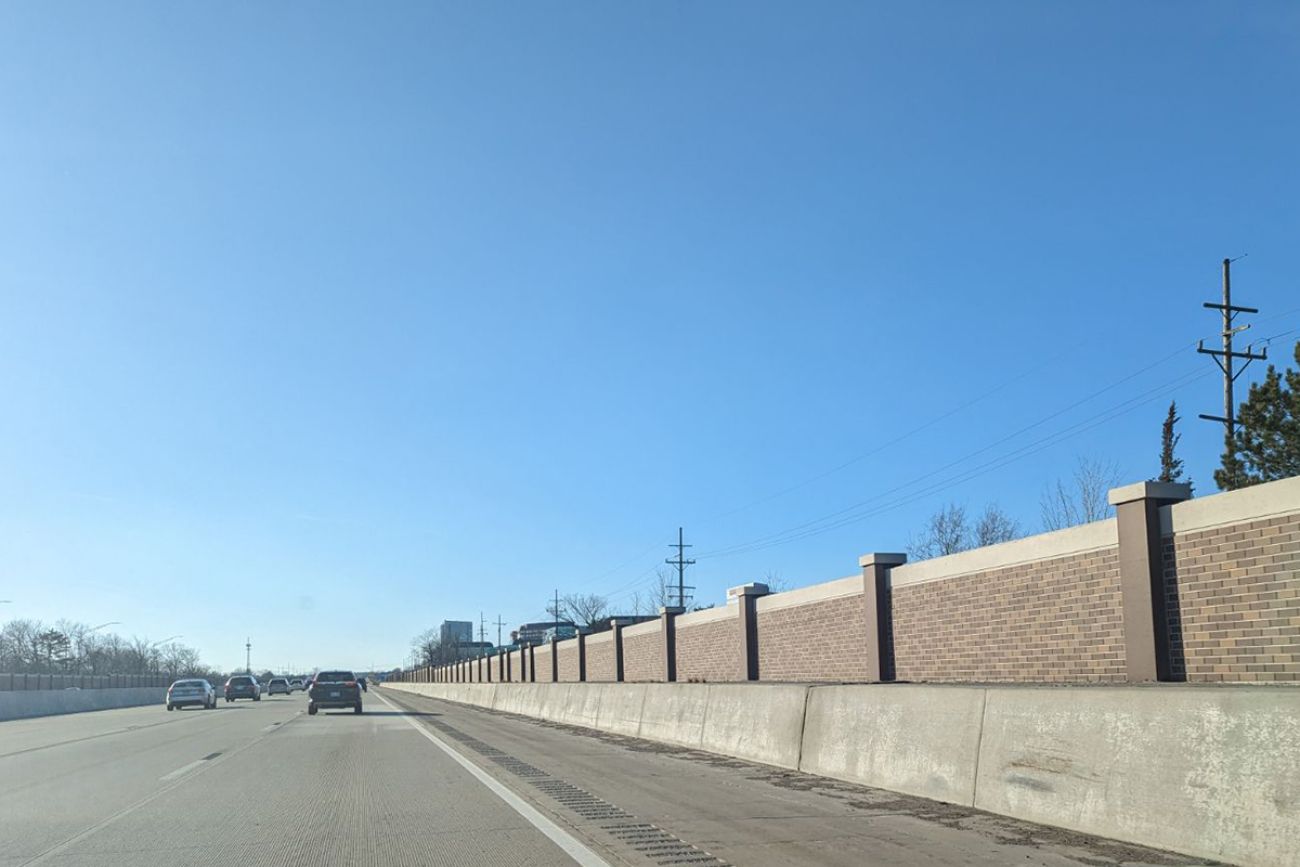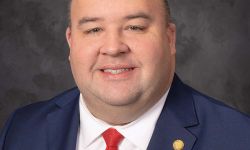Troy residents sick of traffic noise get $10M from state for sound walls

- State budget includes $10 million for sound walls on I-75
- Investment comes after years of lobbying by Troy residents sick of racket brought on by I-75 construction
- Other areas of Michigan also affected, but getting funding for fixes is a heavy lift
A $10 million earmark in Michigan’s budget could lead to a little more peace and quiet for some Southeast Michigan residents long aggrieved by traffic noise from Interstate 75.
The funding, approved last week as part of the state’s $81.7 billion budget, is set to cover planning and construction costs for two sections of sound walls along Interstate 75 between 13 Mile and Adams roads. Details are being finalized, but a Michigan Department of Transportation spokesperson said a request for proposals for the work could be issued by mid-August.
The investment, backed primarily by Rep. Sharon MacDonell, D-Troy, and Sen. Michael Webber, R-Rochester Hills, is a small piece in the state’s multibillion dollar budget. But it’s the latest and largest amount dedicated in recent budget cycles to quieting down traffic noise for people living near major roadways, a widespread issue experts say can have long-term negative health effects.
Related:
- Michigan’s new hands-free driving law takes effect Friday. What to know
- Michigan moves to use cameras to issue speeding tickets in construction zones
- Traffic deaths spike in Michigan since 2019; experts blame risky driving
And it likely wouldn’t have happened if not for years of persistence of a group of Troy residents, who banded together after work on the $1.3 billion Interstate 75 widening project brought with it the pervasive racket of cars and trucks barrelling down the broadened roadway into their yards and homes.
“It really, truly was a team effort,” said Loraine Scussel, a member of the citizen-led I-75 Noise Mitigation Team. “Everyone helped, people volunteered. We attended meetings and met with our political representatives…I had no idea we would be able to accomplish this much.”
Without prior government experience or political connections, the I-75 Noise Mitigation Team started from scratch in summer 2019, circulating petitions, holding neighborhood meetings that grew into sizable town halls and contacting the offices of every agency and politician they could think of. Some residents with engineering experience took their own noise measurements, evaluating each section of freeway adjacent to Troy to obtain their own data and analyze possible solutions.
MacDonell, the Troy representative, said the Troy group could be a model for other communities seeking help with traffic noise, but acknowledged that their path to getting sound wall funding took countless hours of volunteer work, three budget cycles and an overall state investment of $14.3 million to get the study and subsequent project.
Because sound walls are closely tied to federal regulations, MacDonell said a long-term solution might have to start in Washington, D.C. — but she said she’s open to considering ways the state could streamline noise evaluations, including making post-construction sound studies a more regular occurrence.
“Very unintentionally, by modernizing I-75, we broke something, and it was the state's responsibility to fix it,” MacDonell said.
Short of closing the freeway or mandating quieter vehicles and road construction materials, though, there are few easy solutions for traffic noise.
The Federal-Aid Highway Act of 1970 requires states to analyze noise impacts when constructing new projects, but the Federal Highway Administration only provides funding for noise barriers if a residential area meets a slew of criteria under a traffic noise study, including proximity to the roadway, population density and a sustained average noise level of 66 decibels or more. That’s a little louder than an average conversation and a little quieter than a washing machine.
The World Health Organization recommends an average of 53 decibels or lower for road traffic noise exposure and less than 45 decibels for night noise exposure, meaning some areas considered noisy enough to cause health problems might get overlooked under federal guidelines.
Tom Zurberg, the Michigan Department of Transportation’s noise specialist, previously told Bridge Michigan there’s often little the state can do to mitigate noise if the road already exists or isn’t actively under construction, as MDOT typically relies on federal funds for traffic noise studies.
Several lanes of high-volume traffic in major metropolitan areas are going to be loud regardless, he added: “Anybody living next to it is still going to hear that tire-pavement interaction of all those vehicles.”
The sections along Interstate 75 between 13 Mile and Adams roads and other Troy neighborhoods didn’t qualify for federal sound wall funding in initial traffic studies conducted by MDOT for the Interstate 75 project in 2003 and 2015.
After residents pressed for answers, a 2023 state-funded noise study taking current traffic into account found two additional sections of the freeway did qualify for a noise wall — but because it wasn’t a federal study, the state would have to foot the bill.
That’s the “worst part about it,” Webber told Bridge ahead of the budget vote. “We lost the opportunity to get the federal dollars.”
Short of making the source noise quieter, trying to block the path of the noise is the next best option available, which is where sound walls come in. The large barriers can be made of a variety of materials — MDOT typically uses concrete — but serve the purpose of diverting traffic noise away from nearby buildings and neighborhoods.
The efficacy of sound walls can vary greatly based on factors like how far away homes are from the barriers, weather conditions and whether there are any gaps in the wall that could let sound through, meaning they aren’t a catch-all solution for every community.
The two sections adjacent to Troy that now meet the standards weren’t the only neighborhoods seeking relief from loud Interstate 75 noise, Scussel said, noting several sections were consistently over the noise threshold, but didn’t have enough people living there to qualify for a noise barrier under federal standards.
In addition to monitoring MDOT’s progress on the new sound walls, the group now plans to go back to the drawing board to see if there’s any alternative ways to get relief for community members left out of the project, Scussel said.
“We still think that those areas along I-75 still need some kind of noise mitigation,” she said. “We're just not sure what options are available to us yet.”
Troy residents aren’t the only Michigan residents dealing with loud traffic. A group of Ann Arbor residents have been lobbying local and state officials for help reducing noise from the M-14 between Interstate 94 and US-23, particularly a stretch near Wines Elementary School where traffic noise on the playground can exceed 90 decibels — about as loud as a blender at top power.
Michigan lawmakers also authorized funding in past budgets for noise analyses at a segment of Interstate 75 in Southgate and the Interstate 475 and Interstate 69 interchange in Flint to determine whether nearby communities qualify for additional noise barriers under federal guidelines.
But Michigan’s biggest barrier when it comes to dealing with traffic noise is the same one that consistently stymies other infrastructure investments — money. Infrastructure experts have been sounding the alarm for years about chronic underfunding of Michigan’s crumbling roads, and the state’s Transportation Asset Management Council projects 44 percent of roads will be in poor condition by 2030, up from 42 percent in 2020.
Webber, the Rochester Hills senator, said a more flexible, innovative approach to addressing traffic noise could be the key, pointing to other states like Ohio that are experimenting with cheaper alternatives to traditional concrete sound walls, like vinyl fencing.
With so much of Michigan’s infrastructure needing attention, though, diverting funding to traffic noise on a broader scale before addressing road, bridge and other repairs would be a tough sell, he said.
“I think if we had perfect roads, pristine roads, obviously, (traffic noise) would rise higher up the list, but since we're behind in that regard, it's admittedly lower.”
See what new members are saying about why they donated to Bridge Michigan:
- “In order for this information to be accurate and unbiased it must be underwritten by its readers, not by special interests.” - Larry S.
- “Not many other media sources report on the topics Bridge does.” - Susan B.
- “Your journalism is outstanding and rare these days.” - Mark S.
If you want to ensure the future of nonpartisan, nonprofit Michigan journalism, please become a member today. You, too, will be asked why you donated and maybe we'll feature your quote next time!




